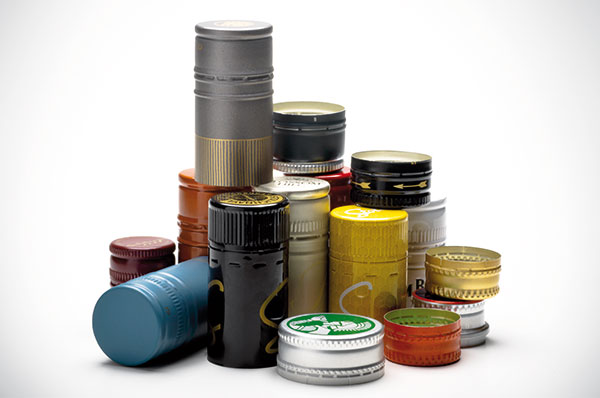Aluminium closures for wine
Exponential growth over the last decade, increasing popularity among consumers thanks to its recognized qualities, especially protection and recyclability. These were the findings of a workshop organized by EAFA (the European Aluminium Foil Association) during SIMEI on the benefits of aluminium closures for wine.

Consumption and consumers. Alessandro Bocchio, General Manager BU Wine Italy for Guala Closures Group, had some revealing numbers on the topic: «There are over six billion screw-on aluminium closure for wine in the world. In particular, already 17% of producers in Italy make use of this packaging type (including for exports). This figure is even more significant if one considers that just ten years ago no one in our country resorted to these closures, and the market was non-existent. What’s more, a recent market study conducted by EAFA in collaboration with IPSOS* shows that 40% of consumers would purchase a bottle of wine with a screw top. The majority of millennials (i.e. “Generation Y”, that of the new Millennium) also report this preference: the consumers of tomorrow will drive the market’s continued growth».
Anti-waste and sustainable. Gino Schiona, General Director of CIAL (the Alluminium Packaging Consortium), discussed the role of aluminium and its sustainability in the wine market.
«We consider the environmental impact of the entire wine supply chain, from the vineyard to production, packaging, distribution and recycling, through the instrument of LCA (Life Cycle Analysis). In this sense, compared with cork stoppers, aluminum closures have a lower environmental impact overall, given that they significantly reduce the risk of deterioration of the wine, while preserving the quality.
But we must not forget their functionality in terms of prevention of waste or spoilage. The greatest impact of traditional corks is attributable in particular to the percentage of wasted wine due to the TCA (2,4,6-trichloroanisole), a major cause of cork molding, which has in fact been estimated as standing between 2 and 5 %. Environmental assessments include the recycling of aluminum closures - concludes Schiona - which is guaranteed through a network of operators in coordination with the consortium; this brings significant environmental benefits such as reducing energy consumption (-95%) and lower production of greenhouse gases». But of course we cannot overlook functionality in terms of prevention of waste or spoilage of the product, feature guaranteed in any case by aluminum closures.
Innovation in tradition. Gianluca Morino, enologist, owner of Cascina Garitina and blogger, gave a testimonial about how it is possible to adopt innovative screw-on aluminium closures for even a very traditional product such as wine. «In Italy there is a lack of clear communication with consumers about the real properties of aluminium closures in protecting the organoleptic properties of the wine. Personally, I opted for these closures because I want my customers to taste the wine that I crafted for them, with no external agents that can somehow alter it».
*The IPSOS study is available at
www.aluminium - closures.org/fileadmin/web/news/EAFA_Closure - Survey_Brochure_web.pdf

















